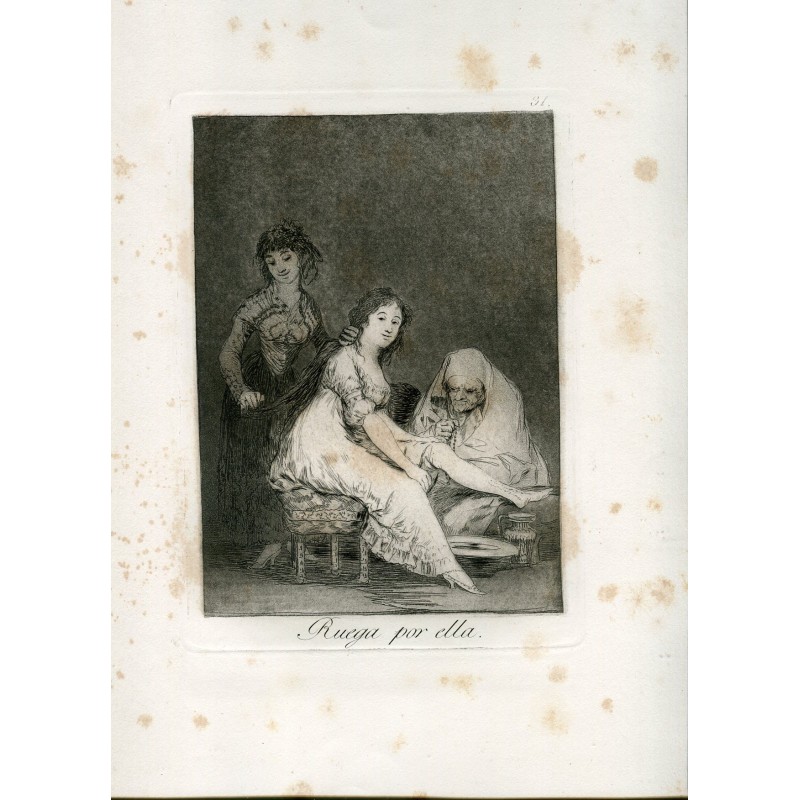Francisco de Goya y Lucientes. 'Ruega por ella' (Pray for her). Plate 31 from Los Caprichos. 5th edition (1881-1886)
This fifth edition of Los Caprichos was printed between 1881 and 1886 in the Calcografía de la Real Academia, stamped in etching and aquatint and with drypoint, in soft sepia ink. The plates were beveled and the binding was done at the top of the prints. The edition consists of 210 copies. Very clean and correct tinted stamping; aquatint allows shadows to be nuanced by creating grayscale gradation and dramatic, haunting lighting. The strong paper used does not have a water mark as usual as Harris catalogs it. The original folder in which the complete collection was presented was made of cream cardboard with the portrait of Goya stamped on the cover and the Title: “Fran.co Goya y Lucientes Pintor”.
'Ruega por ella' (Plate 31) is part of The Caprichos. This print is thematically related to Capricho 17. Goya addresses the issue of female prostitution and matchmaking women through the representation of a young courtesan with her maid and bawd. The author is interested in underlining and satirizing the peculiar religiosity of the old pimp who prays to God with the rosary for the favorable fate of the young prostitute. This trait constitutes one of the unmistakable characteristics with which the character was configured from its origins. The devotion of the old woman is shown through the mechanical prayer of the rosary, "utilitarian and pragmatic religiosity, destined to promote execrable ends."
Plate size: 15x20,5 cm.
Paper size: 26x36.5 cm.
It has rust stains that can be seen in the image.
Los caprichos (The Caprices) is a set of 80 prints in aquatint and etching created by the Spanish artist Francisco Goya in 1797-1798, and published as an album in 1799 (first edition). The prints were an artistic experiment: a medium for Goya's condemnation of the universal follies and foolishness in the Spanish society in which he lived.
Thirteen official editions are known: that of 1799, five in the 19th century, and seven in the 20th century. Being the last one in 1970 carried out by the Royal Academy of Fine Arts of San Fernando.


